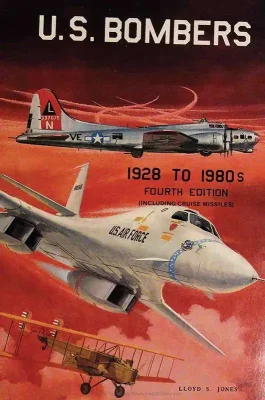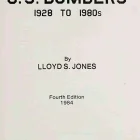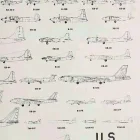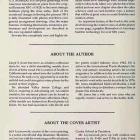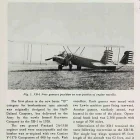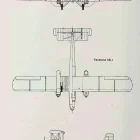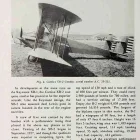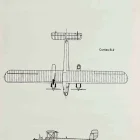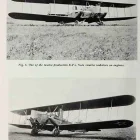- Military Library
- Vehicles & Crafts
- Aircraft
- U. S. Bombers & Cruise Missiles by Lloyd S. Jones (published 1984)
U. S. Bombers & Cruise Missiles by Lloyd S. Jones (published 1984)
Genealogy of American bombardment planes from 1928 to 1980
U. S. BOMBERS is a complete genealogy of the American bombardment plane from the original Keystone XB-1 of 1928, to the latest strategic bombers plying the skies today. Each of the numbered designs following the pioneer XB-1 is fully illustrated with photos and three-view general arrangement drawings. Also, the major features, including dimensions, armament, performance and development are described in this new up-dated edition.
Seventy-five completely new and highly-detailed three-view drawings were created especially for this book. Many unseen photos have been added and one new chapter describes the color schemes used on each bomber type, a feature that will be of immense value to model builders and aviation artists.
An important feature of this book is the scale chart showing the relative sizes of all the planes on one page; a graphic illustration of American bomber technology for over fifty years.
Bombers have been the backbone of an offensive military force for years. The first bombers sort of “occurred” during World War I when some imaginative pilots and observers began dropping explosives, or any other loose objects, on the hapless infantry men below. By the end of the war the bomber had become an entity, with Britain, Germany, Italy and Russia rolling-out monstrous machines able to deliver thousands of pounds of bombs to their targets. Caught completely unprepared by World War I, the United States was compelled to purchase the French Breguet 14 and the British DeHavilland DH-4 to equip its squadrons in Europe. In February 1918, the first license-built DH-4 was flown in America and by the end of the year over 1,000 per month were being completed. Powered with the famous American Liberty engine, the DH-4 was the only American-built plane to operate over enemy soil during the First World War.
The first heavy bombers constructed in the United States were, likewise, license- built versions of foreign designs. These were Italian Caproni and British Handley- Page twin-engine biplanes. By the end of the war only a handful of these had been completed. Following the Armistice several indigenous designs materialized and were categorized under a variety of designations denoting specific duties. Though descriptive of the plane’s role in the service, they were often complicated. Typical was the XNBL-1 (Experimental Night Bombardment, Long Range, #1), LB-5 (Light Bombardment), or NBS-1 (Night Bombardment, Short Range). This complex system of designation was replaced in May of 1924, with the present method of consecutive numbers regardless of the size or role, although some specific designations are being added to the basic designators lately. For example, we now have the RB- 57D (Reconnaissance Bomber), and FB-111A (Fighter Bomber).
Designations beyond B-70 were mainly missiles and related vehicles, the number 70 being the last assigned to a bomber-type before the Department of Defense revised the designating system on September 18, 1962, at which time the numbers began at -1 again. Hence, the Rockwell B-l is the first of the new series, its successors to be B-2, B-3, etc. While many fighters, cargo planes and attack bombers were re-designated under the new system, no bomber classifications were changed.
Contents of the book
- Keystone XB-1 SuperCyclops
- Curtiss B-2Condor
- Keystone B-3A, B-4A, B-5A, & B-6A Panther
- Douglas Y1B-7
- Fokker XB-8
- Boeing Y1B-9A.
- Martin B-10B, B-12A, XB-13, & XB-14
- Douglas YB-11
- Boeing XB-15
- Martin XB-16
- Martin XB-16 (Final Design)
- Boeing YB-17 Flying Fortress
- Boeing B-17G Flying Fortress
- Douglas B-18A and XB-22 Bolo
- Douglas XB-19
- Sikorsky XBLR-3
- Boeing Y1B-20
- North American XB-21Dragon
- Douglas B-23 Dragon
- Convair YB-24 Liberator
- Convair B-24J Liberator
- Convair - Ford XB-24N Liberator
- North American NA-40-2
- North American B-25H Mitchell
- Martin B-26B Marauder
- Martin XB-27
- North American XB-28
- Boeing B-29 Superfortress
- Lockheed XB-30
- Douglas XB-31 (Model 423)
- Convair XB-32
- Convair B-32 Dominator
- Martin XB-33
- Martin XB-33A Super Marauder
- Lockheed-Vega B-34 and B-37 Ventura
- Northrop XB-35 FlyingWing
- Convair B-36D
- Convair YB-36C
- Lockheed-Vega XB-38 Flying Fortress
- Boeing XB-39 Spirit of Lincoln
- Lockheed-Vega YB-40 Flying Fortress
- Convair XB-41Liberator
- Douglas XB-42 Mixmaster
- Douglas XB-43
- Pratt & Whitney XB-44 Superfortress
- North American B-45 Tornado
- Convair XB-46
- Boeing B-47E Stratojet
- Martin XB-48
- Northrop YB-49 and YRB-49A Flying Wing
- Boeing B-50D Superfortress
- MartinXB-51
- Boeing B-52A and B-52H Stratofortress
- ConvairXB-53
- BoeingB-54A
- Boeing XB-55
- Boeing XB-56Stratojet
- Martin B-57BIntruder
- Martin RB-57D
- Convair B-58A Hustler
- Boeing XB-59
- Convair YB-60
- Martin TM-61C Matador
- Northrop SM-62A Snark
- Bell GAM-63 Rascal
- North American XSM-64 Navaho
- Convair SM-65D Atlas
- Douglas RB-66C Destroyer
- Radioplane GAM-67 Crossbow
- Martin XB-68
- Martin SM-68Titan
- Lockheed RB-69A
- North American XB-70 Valkyrie
- Rockwell International B-l
- General DynamicsFB-111
- Boeing AGM-86B ALCM
- General Dynamics AGM-109 Warhawk
- Appendix (Photo Gallery)
- Typical Color Schemes
- WWII (1939-1945)
- Pacific War (1941-1945)
- Cold War (1947-1991)
- Korean War (1950-1953)
- Vietnam War (1955-1975)
- {{#owner}}
- {{#url}} {{#avatarSrc}}
{{name}} {{/url}} {{^url}} {{#avatar}} {{& avatar}} {{/avatar}} {{name}} {{/url}} - {{/owner}} {{#created}}
- {{created}} {{/created}}


